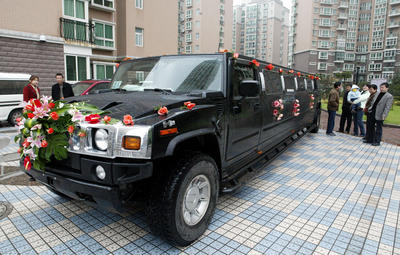In the idiom and ideology of the autocratic rulers of China’s capitalism there is an alternative story: the middle class is seen as the lynchpin of political stability, the staunchest and most rational, self-interested supporter of China’s new (urban) way of life, the foundation of its advanced economy, whose social position was fostered by 30 years of economic development and guaranteed by an unlikely champion, the Communist Party.
Both visions appear to be supported by historical precedents (including in Asia), as middle classes have revealed themselves to be revolutionary social formations in some cases and status quo watchdogs in others. Yet the determinism of both narratives might be fundamentally wrong.
The prior question to ask, however, is: what is the Chinese middle class?
It is, in fact, a fuzzy social formation, with no horizontal homogeneity, bordered north and south by other fuzzy social groups. If we adhere to Marx’s analysis, a class would need a consistent consciousness and a stable relationship to the means of production, something hard to find in the segregated, high-rise residences of China’s middle-income urban families. If we take note of Weber they would need to share consumption, lifestyles (and values). Whichever way one looks at the Chinese middle class, it is almost impossible to grasp what it really is without accepting that a definition is only a convention, a simplification.
Attempts, often sophisticated, at defining an acceptable understanding of the Chinese middle class are indeed broadly available in the newly rediscovered Chinese social sciences.
Relying on numbers — such as the 150 million credit cards in circulation in 2008 or 26 million cars sold in 2009 despite China having one of the lowest consumption rates and one of the highest saving rates in the world — one can explain the global appeal of the middle class and the awe inspired in many commentators by its growth. Whether defined by employment or by education, by lifestyle and values, by income or by a combination of these factors, middle-class citizens are said to constitute between 3 per cent and 40 per cent of the Chinese population. Most scholars agree to disagree on what the middle class is although Cheng Li’s recent Brooking’s Institution volume provides the best survey of definitions to date.
Sometimes the urge to define says more than the definition itself. The bean-counting exercises around finding the Chinese middle class are not only a sign that something real is changing in Chinese society, but also that many different identities are becoming visible and that social complexity is becoming harder to describe and therefore to govern. This frenzy of definitions occupies the Chinese mainstream media and has an osmotic effect on social and cultural policies, especially in large cities faced with rapid stratification of interests and clustering of their population into interest groups.
The ‘model’ role of the middle class is a crucial element of the dominant social and cultural discourses that the Chinese government promotes in pursuit of the political imperative of social stability. In an age when harmony is the centrally-defined goal of policy, what group is better equipped to become the exemplar of social behaviour than the educated, well-off, responsible, self-interested and propertied middle class? Who is more suitable to be made into the prototype of China’s modern citizens than those who display economic dynamism, enjoy success and have a vested interest in the existing social order that made them so?
The behaviour of the middle classes thus features prominently, for example, in the textbooks distributed to migrant workers who arrived in Shanghai on the eve of the 2010 World Expo, to be taught how to walk, dress, eat and use the restrooms. The ‘harmonious’ (hexie) and ‘civilised’ (wenming) lifestyle of the successful, well-off, educated urbanites becomes a benchmark for both the advertising campaigns of real estate companies and the modernisation and civilisation campaigns of the local governments.
This exemplarism, and its central role in advancing social stability, is made manifest by the existing structure of China’s labour market inequality, one where, despite 33 years of economic reform, the most efficient and rewarding components of the labour market remain in the hands of the state, and working for the public sector (or ‘within the system’, as it is normally referred to) is still the top desiderata of Chinese graduates.
The middle class is therefore as much a social structure (constructed by the state and reproduced by the market) as it is an object of political discourse. As a publication of China’s Police Academy reveals, it is also becoming a symbol of all that China wants to be.
Our country needs the middle strata because it is the political force necessary to stability, it is a regenerative force of production, it is the scientific force behind creativity, it is the moral force behind civilised manners, it is the force necessary to eliminate privilege and curb poverty, it is everything.
Luigi Tomba is a Fellow at the Department of Political & Social Change, School of International, Political & Strategic Studies, Australian National University.
This article was published in the most recent edition of the East Asia Forum Quarterly, ‘Governing China’.

